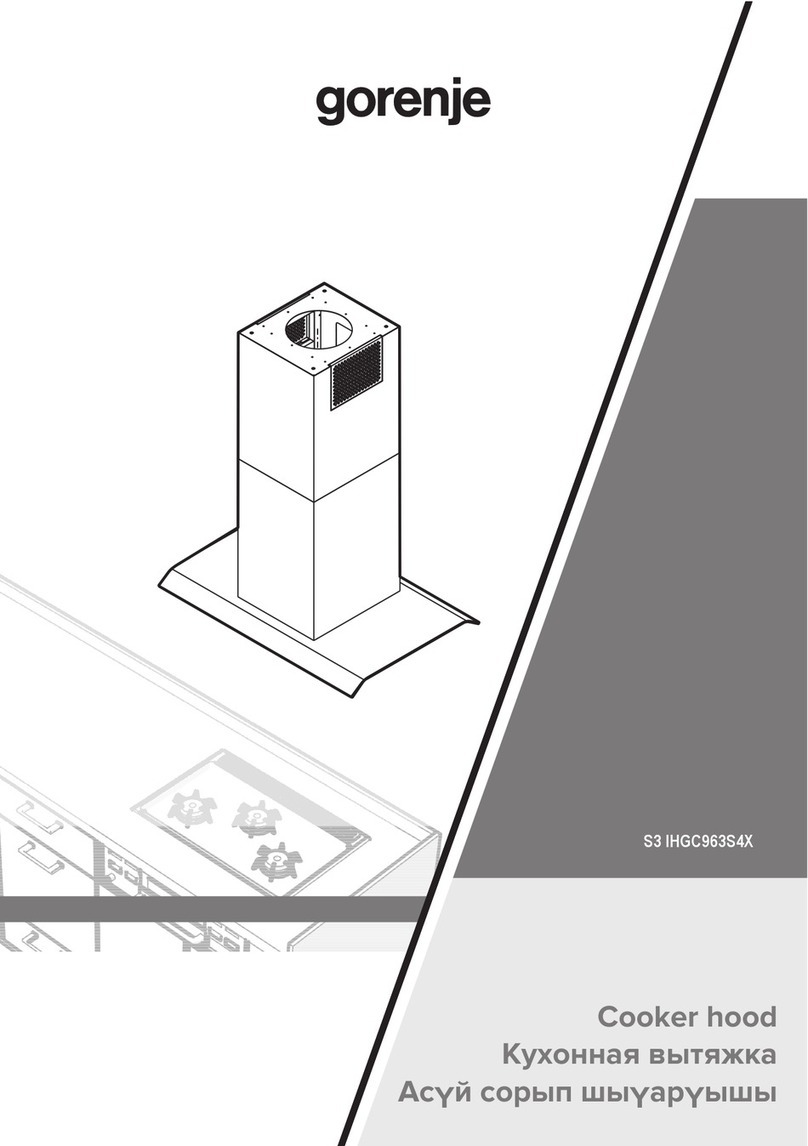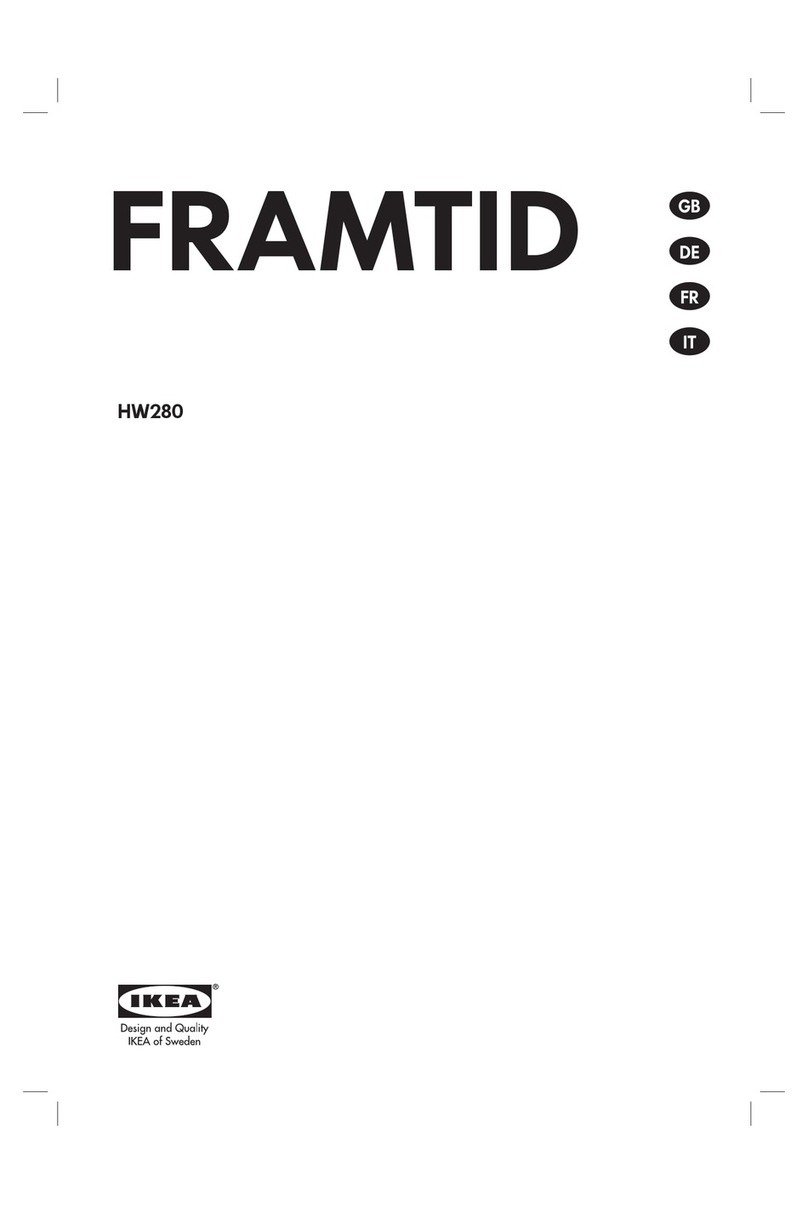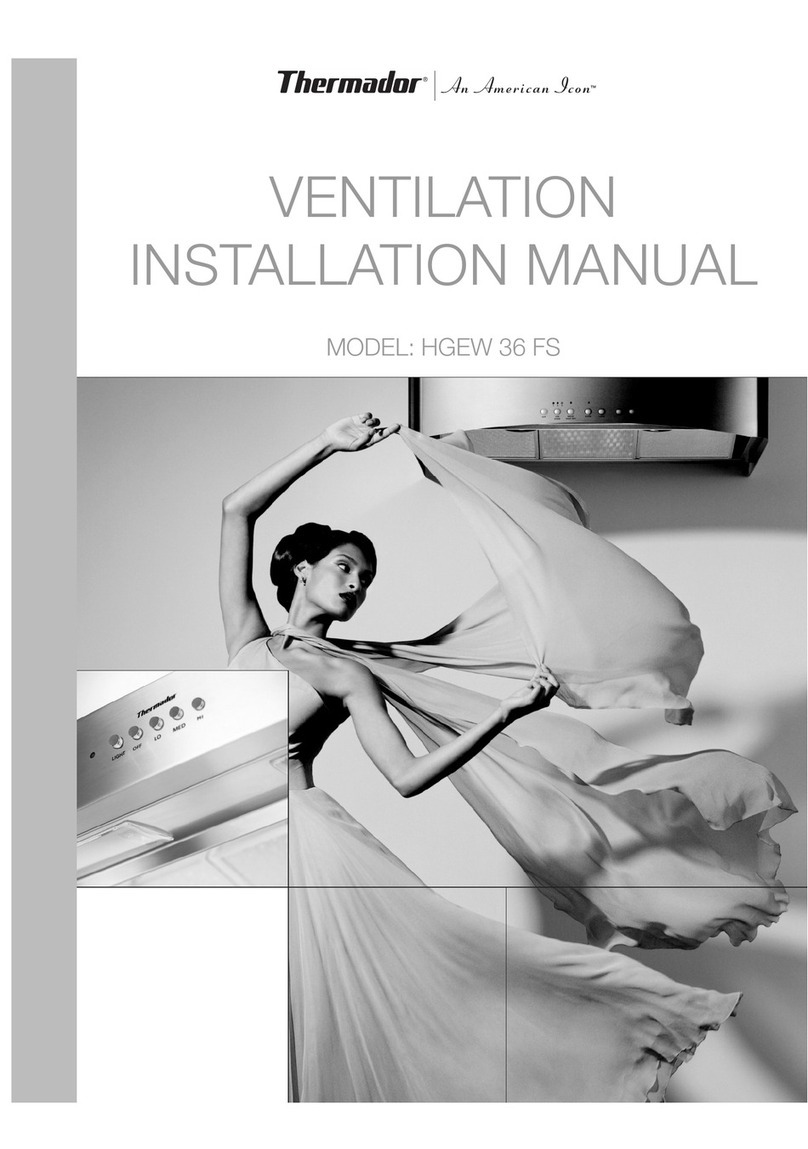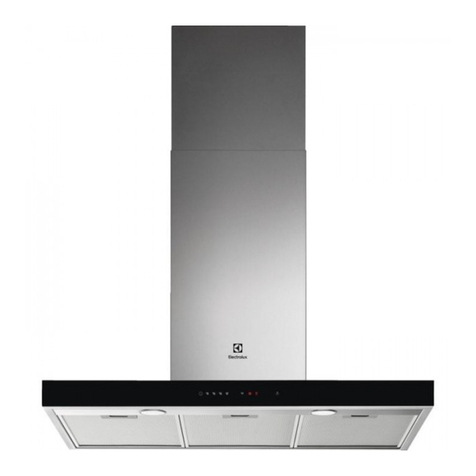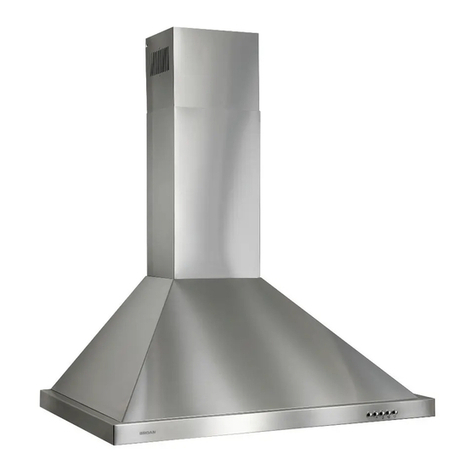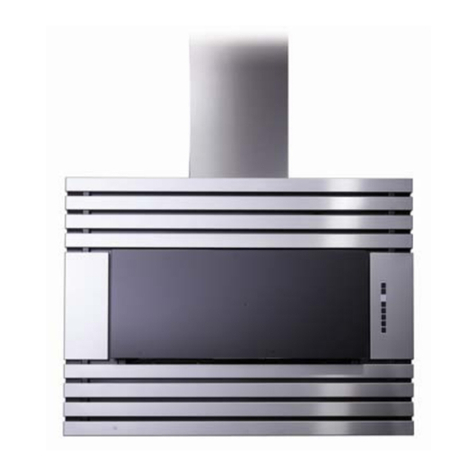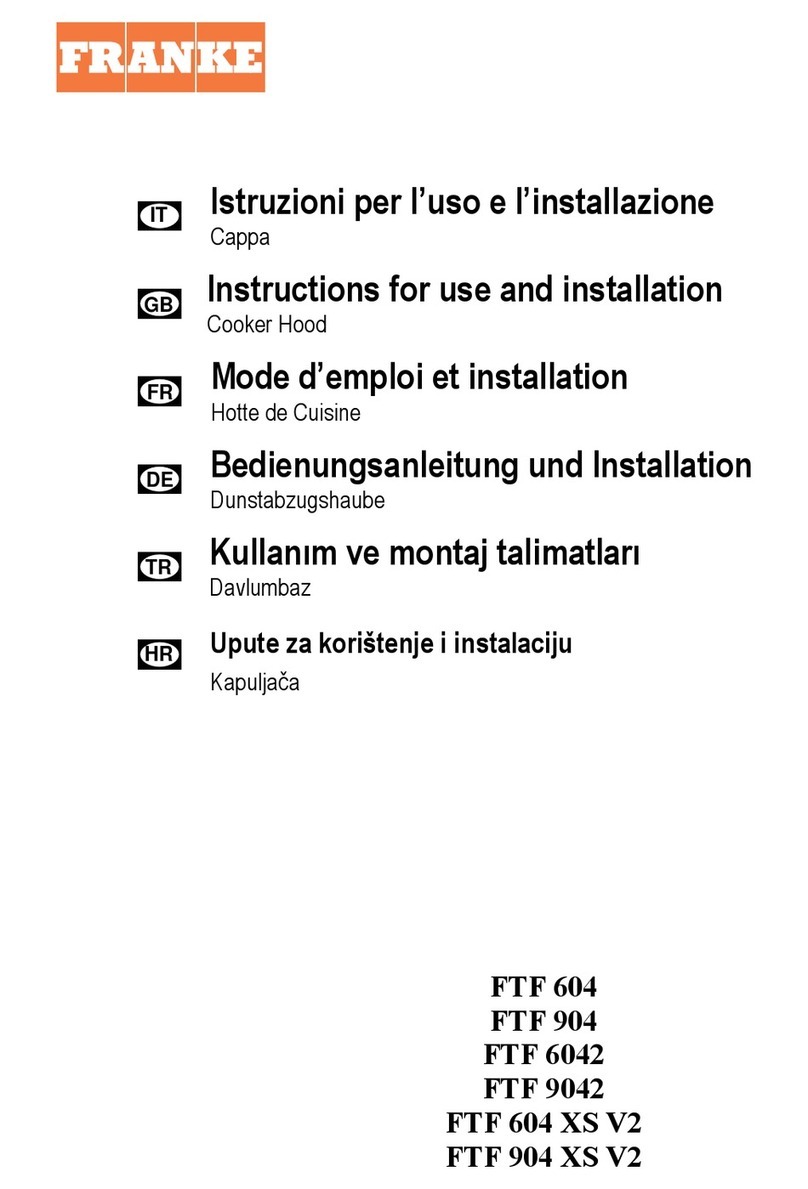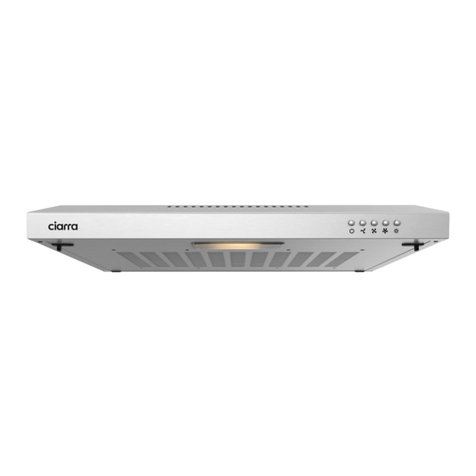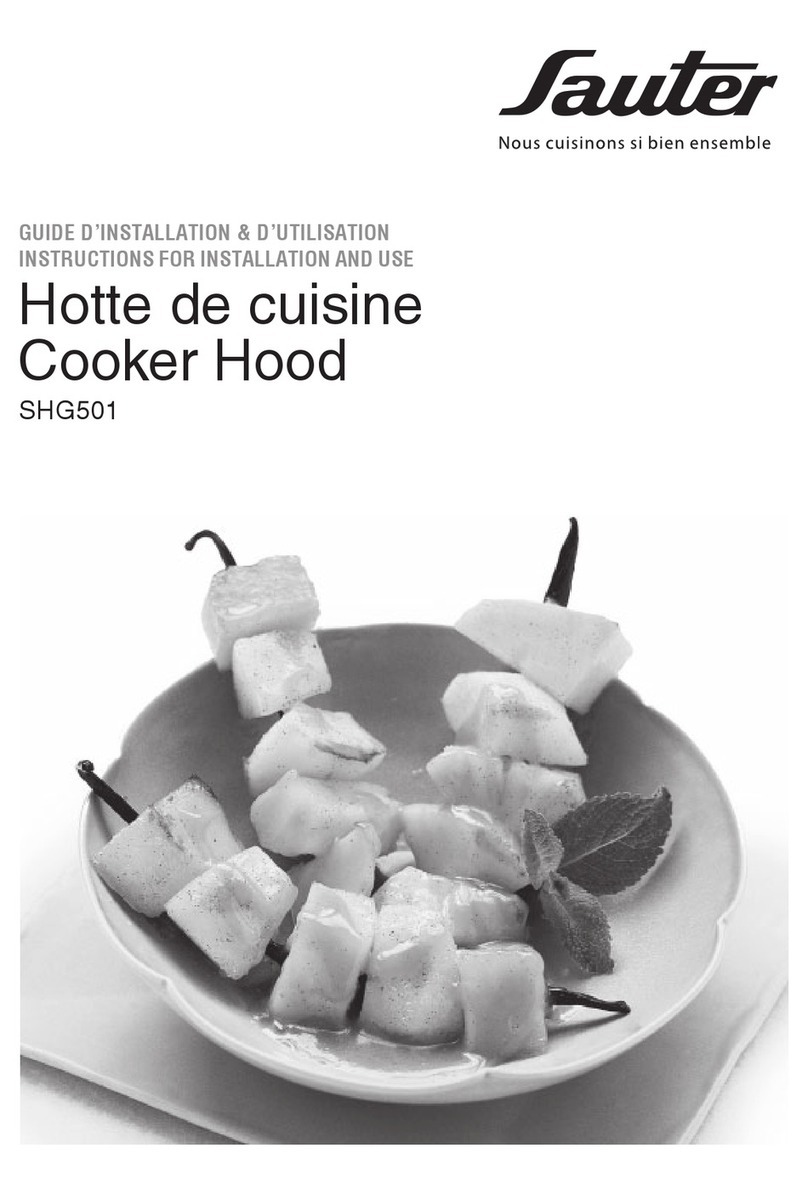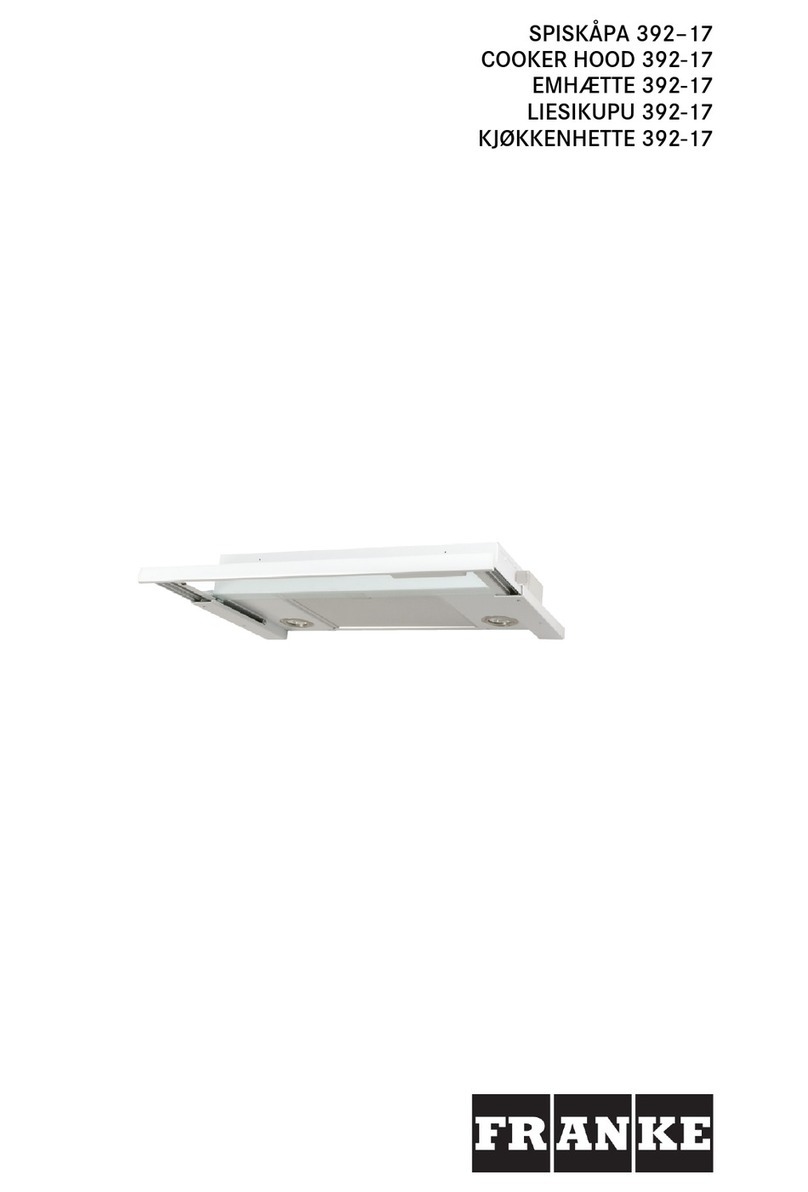
6
Important Safety Instructions
• READ ALL INSTRUCTIONS BEFORE INSTALLING AND OPERATING THIS APPLIANCE.
• The manufacturer and/or distributor/reseller declines all responsibility in the event of failure to
observe the instructions given here for installation, maintenance and suitable use of the product.
The manufacturer and/or distributor/reseller further declines all responsibility for injury due to
negligence and the warranty of the unit automatically expires due to improper maintenance.
The manufacturer and/or distributor/reseller will not be held responsible for any damages to
personal property or real estate or any bodily injuries whether caused directly or indirectly by the
range hood.
• Disconnect the product before doing any maintenance job on the range hood.
• Do not spray the range hood with water directly.
•
• Do not burn directly under the range hood.
•
• Children shall not play with the appliance. Cleaning and user maintenance shall not be made by
children without supervision.
•
• Accessible parts may become hot when using with cooking appliances.
•
gas or other fuels.
•
• If the supply cord is damaged, do not operate the appliance. It must be replaced by the
• The appliance is not to be used by persons (including children), with reduced physical, sensory or
mental capabilities, or lack of experience and knowledge, unless they have been given supervision or
instruction.
• Disconnect the power supply before cleaning, repairing, replacing light bulb or dismantling the range
hood.
• There should be adequate ventilation in the room when the range hood is used along with appliance
that burns gas.
Excessive Weight
Require three or more persons to
move and install this range hood.
Spinal or other bodily injuries could
occur if it is not followed.
Hazard of Burns!
Light bulb becomes extremely hot when turned on. Do not touch it until it cools down.
Touching hot bulbs could cause serious burns.
Severe Injury
Rotating fan can cause severe injury.
Stay clear of fan when power is present.
Hazard of electrical shock!
Do not perform service on an electrically
live system. Disconnect the main
electrical supply before servicing this
device. Touching electrical connectors or
other exposed electrical circuitry inside
could result in death, serious bodily injury,
or property damage.
